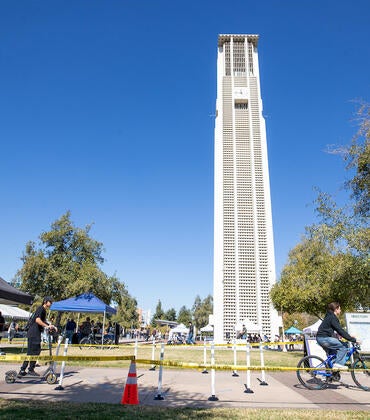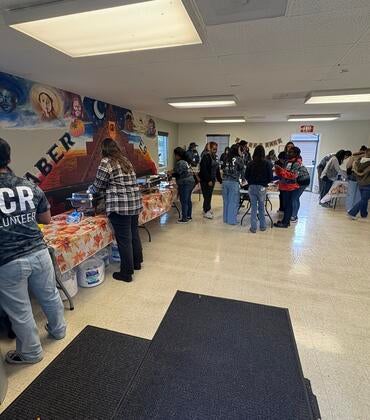A new exhibit featuring fossils from hundreds of millions of years ago brings the work of UC Riverside researchers in the Australian Outback to the Inland Empire for the first time.
“From California to Down Under: Fossils of the Ediacaran” opened March 15 at the Western Science Center in Hemet and will run until fall 2025. It features specimens and replicas from the Nilpena Ediacara National Park in South Australia, where Mary Droser, a distinguished professor of geology, and her team have been working for 25 years.
They’ve unearthed remains of ocean-dwelling animals from around 550 million years ago, a time in Earth’s history known as the Ediacaran period. The fossils, preserved as impressions on the seabed that later hardened to rock, represent some of the first known complex multicellular organisms.
“The Ediacara Biota in South Australia reveals the unfolding of animal life on planet Earth,” Droser said. “In that way, it is part of the history of all of us on this planet.”
Heather McCandless, a doctorate student in paleontology who has been working with Droser for five years, helped curate the exhibit. It will the first of its kind and largest in the United States, including a few specimens that have never been shown anywhere, she said.
Among the recent discoveries included are a raisin-shaped organism named Attenborites in tribute to nature documentarian Sir David Attenborough and the palm-sized Quaestio, named for the question-mark shaped ridge on its back.
The Ediacara Biota area is now found in the middle of the Australian Outback but 550 million years ago it was a shallow sea. Surprisingly complex and diverse ecosystems flourished in this sea, which over time were smothered by sands deposited by storm events. This sand solidified into what are now fossil beds, McCandless said.
“What we’ve ended up with is this incredible record of the beginnings of animal life on Earth with sequential bedding planes that preserve whole ecosystems where those organisms were living,” she said.
Some of the fossil animals are as tiny as 1 or 2 millimeters while others are as large as a meter long. The exhibit includes a few of the actual fossils. Others are plaster casts made from latex molds and 3D scans that researchers took at the site and provided to the museum, which has a 3D and resin casting lab.
The exhibit includes touchable 3D prints along with a fossil wall and a touch table where visitors can feel what the Earth’s first animals were like. The touch table includes a scavenger hunt activity where visitors are encouraged to identify the creatures.
One display shows some of the everyday tools used by Droser’s team in the field: silly putty used to make impressions, dental tools to clean the fossils, and brushes to clear out dirt.
The exhibit also includes an art piece and a photogrammetric model of the seabed where the specimens were discovered, both created by graduate students who worked with Droser. McCandless worked with Alexandro Vega ’24, who worked with Droser as an undergraduate geology student, to create informational panels for the displays.
“It brings the Outback to the Inland Empire and you’re able to get the feel for what it’s like to work out there with the information provided in the exhibit,” McCandless said. “The displays describe where we’re working, who we’re working with, how this fossil site has been created, what we’re finding out there, and allows you to experience it for yourself.”
The natural history museum has collaborated in the past with UCR researchers but this is the first and most extensive exhibit of this kind.
“From California to Down Under is part of our efforts to bring scientific research from around the world to the museum,” said Alton Dooley, executive director of the Western Science Center.
Learn more about the exhibit and how to visit the museum here.
Top image and photo gallery courtesy of the Western Science Center.










